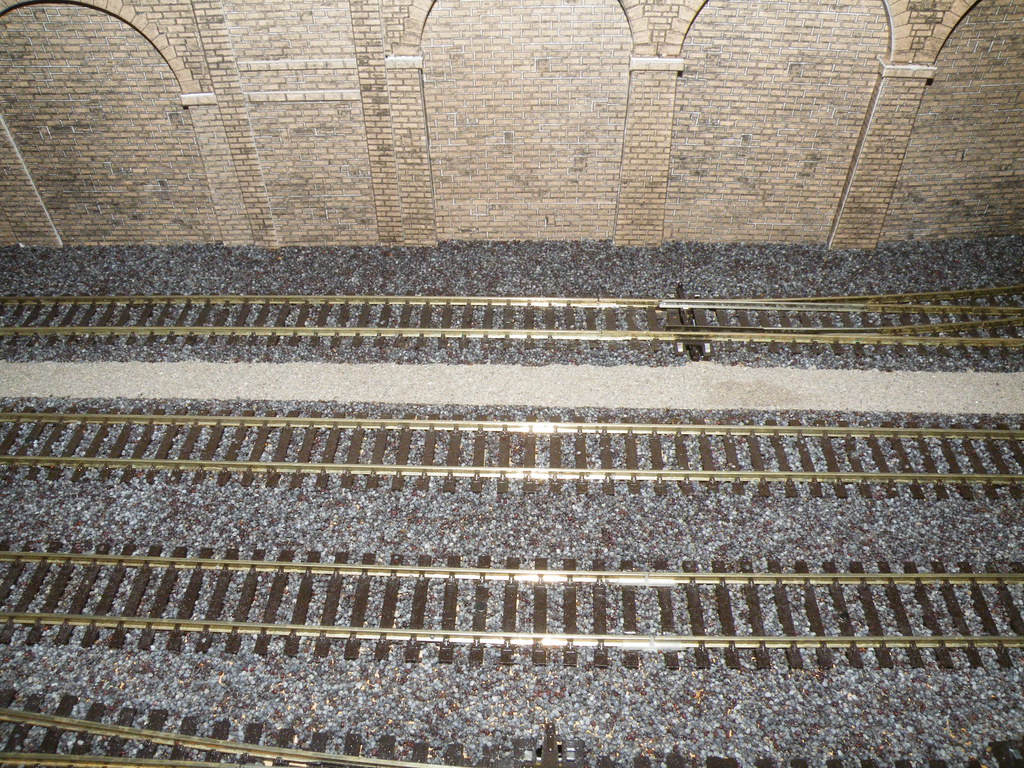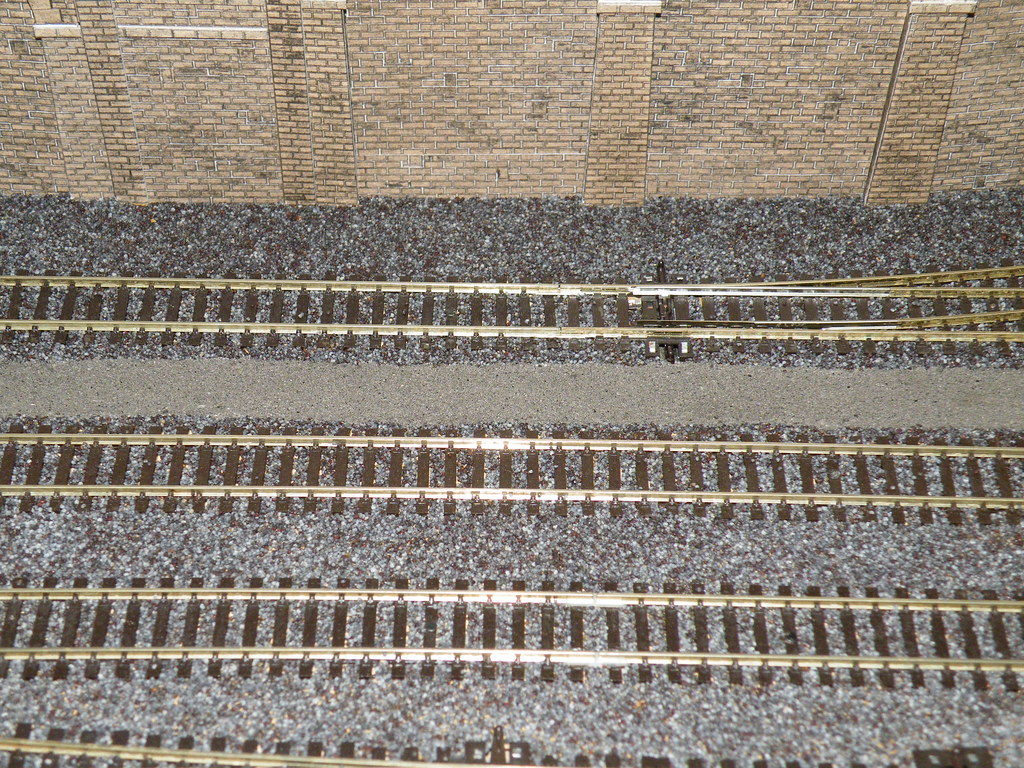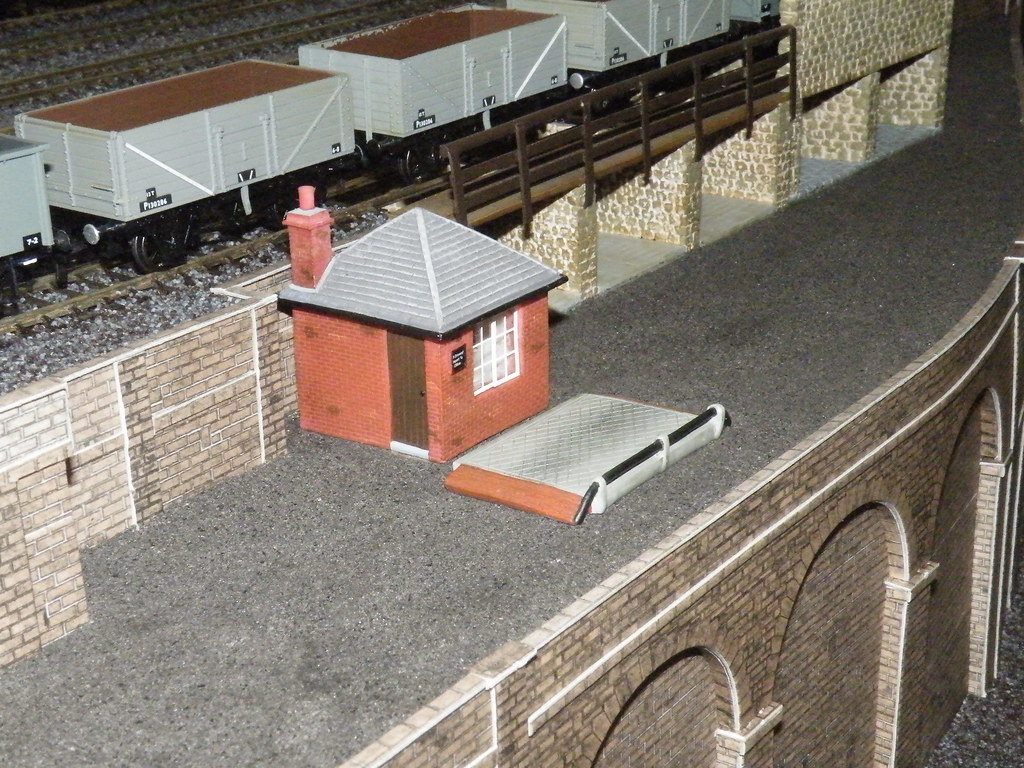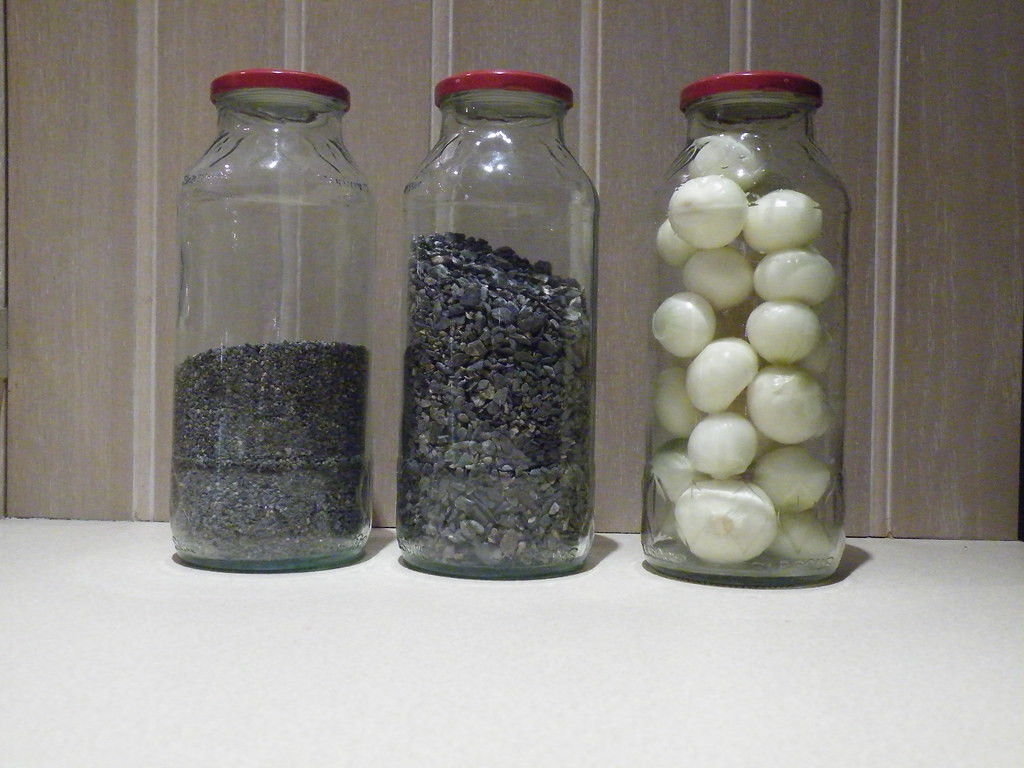Some weeks have elapsed since I first wrote about using sieved sand from the garden for ‘scatter’. I can now report on what happens when you add coal dust.

In the view above the area of ‘ground’ at the end of the platform is a mixture of my original sieved sand and paste mix with the addition of 25% coal dust (three teaspoons of sand and one teaspoon of coal dust). This Station is a busy junction and the dark colouring seemed perfect. However to differentiate between more rural and less heavily trafficked areas I decided to reduce the coal content further.

In the view above the area labelled ‘A’ is my original mix of sieved sand and paste. The material labelled ‘B’ is this original mix with 12.5% coal dust added (seven teaspoons of sand and one teaspoonful of coal dust). The area labelled ‘C’ is a mixture of the two and was an attempt to grade the colour of the material on the right so that it matched the material on the left. It hasn’t quite worked but perhaps still satisfactory.

The original sieved sand is quite light in colour. The view above shows what purports to be the walkway between the Station and the Engine Sheds. I thought it looked a bit too bright so it was stripped out and replaced with the 12.5% coal dust mix shown below.

It would be surprising if everything worked first time! However here was an opportunity for another little test? How durable is a sand and paste mix? Well - when dry it seems like plaster. However when moistened with water using a small paint brush it rapidly looses strength and can be easily scraped up with a steel spatula. If left undisturbed and allowed to dry out again it seems to regain its original strength.

So far so good - a view of the Coal Depot with the Skaledale Goathland Coal Drops. The access road is surfaced using the original mix with 25% added coal dust. Whilst the flat area around the coal drops was formed with Medium Density Fibre board (MDF) the sloping access road was cut from the cardboard backing to writing pads. The morning after was not so good. Water from the sand and paste mix had a hugely damaging effect on the cardboard and with the weight of the wet sand and paste the access road resembled a ‘U’ shaped ditch. Panic not – after 24 hours drying it was sufficiently firm to ‘trowel in’ extra material and to re-establish the original profile. A couple of months on and it is very solid and a good shape.

The view above shows more kitchen utensils – this time the tea strainer used to obtain my coal dust. Everything passing through the sieve was mixed with my sieved sand. Everything retained in the sieve was put back in the jar for another time. Coal is a very soft ‘rock’ and will continue to break down with time – for this reason it is probably not ideal in model engine tenders unless well sealed with say a varnish. We had a couple of small bags of coal in the garage left over from our old multi-fuel stove and I collected the residual fine material from the bottom of these bags and stored it in old pickling jars for modelling purposes.

A view of some more pickling jars – two jars with medium and coarse gravel stripped out from my original sieving – and one jar with pickling onions for Christmas. How time flies.
-
 5
5


.thumb.jpg.60c53fcbcaa34017b05b8919d1a9e6d2.jpg)

7 Comments
Recommended Comments
Create an account or sign in to comment
You need to be a member in order to leave a comment
Create an account
Sign up for a new account in our community. It's easy!
Register a new accountSign in
Already have an account? Sign in here.
Sign In Now